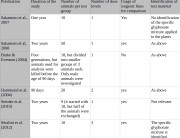Summary answer:
The Sprague-Dawley (SD) rat is an excellent human-equivalent model for predicting cancer in long-term (two-year) studies. It gets around the same number of tumours as humans do over its lifespan and as with humans, these increase with age. However, it must be remembered that Séralini’s study was not a carcinogenicity study, because of the relatively few numbers of rats per group.
Detailed answer:
Critics of Séralini say that as 30% of the untreated female control rats in his experiment got “spontaneous” tumours, the tumours in the treatment groups are meaningless. They say that the Sprague-Dawley (SD) rat is prone to tumours.
But Séralini’s female control rats were no more cancer-prone than humans living in an industrialised nation and in fact were slightly less so. The lifetime risk of developing cancer in the UK (excluding non-melanoma skin cancer) is 37% for females and 40% for males.1 It should also be noted that only one of the ten male control animals developed a tumour and that was very late in life.
There is no logic in selecting an especially hardy, cancer-resistant type of rat when rates of cancer in humans are relatively high.
Peer-reviewed data collected by the Cesare Maltoni Cancer Research Center of the Ramazzini Foundation in Italy confirm that the SD rat is an excellent human-equivalent model when used in carcinogenicity studies. In other words, the SD rat is highly predictive of effects on humans.2
When evaluating Séralini’s findings, it is important to note the differences in the type and behaviour of the tumours in the test and control groups. In the test groups, tumours arose earlier and grew more quickly. Frequently animals had more than one tumour (up to three), which was not the case in the controls. These biological differences cannot be ignored.
However, Séralini’s study was not a carcinogenicity study and he has never claimed it to be. The scientifically sound conclusion to draw from his study is that long-term chronic toxicity and carcinogenicity studies must be performed on all GMOs prior to release.
His study also shows that such tests must also be carried out on the complete commercial formulations of pesticides, as they are sold and used, rather than just the presumed active ingredient.
References:
1. Sasieni PD, Shelton J, Ormiston-Smith N, Thomson CS, Silcocks PB. What is the lifetime risk of developing cancer?: The effect of adjusting for multiple primaries. British journal of cancer. Jul 26 2011; 105(3): 460-465.
2. Soffritti M, Belpoggi F, Degli Esposti D. Cancer prevention: The lesson from the lab. In: Biasco G, Tanneberger S, eds. Cancer Medicine at the Dawn of the 21st Century: The view from Bologna. Bologna: Bononia University Press; 2006:49–64.
Sources of criticism:
Alan McHughen, genetic engineer


















